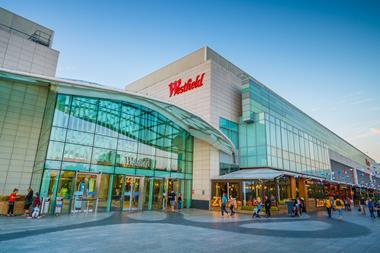With House of Fraser entering administration, Debenhams announcing the closure of up to 50 stores and accessories chain Claire’s rumoured to be following suit, the UK’s high streets are under increasing pressure.

Indeed, this year has seen the greatest number of store closures since Woolworths collapsed a decade ago, with 1,500 retail units left empty.
Philip Hammond addressed the issue in his recent budget announcement. A dedicated high street task force will be set up to develop “innovative strategies to help high streets evolve”.
Meanwhile, the Treasury has announced £900m in business rates relief for small retailers, as well as £675m to pay for local projects, such as improving high street transport links.
Certainly, Britain’s high streets need support. Stores have struggled to stand up to competition from online retailers such as ASOS and Amazon, and commercial property investors are increasingly steering clear of retail.
But this does not tell the whole story. Some areas of retail are performing strongly: the major supermarkets’ increased emphasis on convenience stores is a response to our changing shopping habits; and retail parks that offer large-format stores, affordable rents, free car parking, click & collect and a compelling mix of retail and leisure still make attractive long-term investments.

A recent survey by brand experience consultancy I-AM of 2,000 people aged 18 to 35 across the UK revealed that 74% of millennials preferred physical stores to online shopping. Although buying online is convenient and low cost, it cannot offer consumers the same experience as a physical store.
Significantly, the report also found that 80% of millennials had been shopping as a day trip within the last month. This highlights that, while transactions may be shifting from physical stores to online, there is still a place for shopping as an activity. Consumers want – and need – engaging social experiences that cannot be bought online or found at home.
Just as residential and commercial property are becoming more service focused, retail needs a much stronger emphasis on management, service and experience.
Find out more - The high street paradox
Shopping centres today need to provide an attractive environment where there is always something new to keep visitors coming back. F&B outlets, hair and beauty salons, cinemas, gyms, temporary events, seating and pop-ups can all turn retail assets from flat, transactional spaces into dynamic destinations.
Retailers themselves are recognising the importance of ‘retailtainment’ too: from events at Waterstones to yoga classes at Lululemon, spas at Lush, Topshop’s virtual reality waterslide experience and weather simulators at The North Face, they are coming up with creative ways to combine shopping with experience.
Location is also a key factor. One of the drivers for our investment in Morfa Shopping, Swansea’s premier retail park, was its prime location next to the Liberty Stadium. Some 314,000 people live within a 20-minute drive of Morfa Shopping, making it a convenient destination for thousands of people.

Although some retailers have fallen victim to ecommerce and there will be winners and losers on the retail stage – it’s the nature of the game – investors stand to benefit from shifting consumer behaviour if they adapt to it. Physical and online retail need to work together seamlessly rather than competing with one another, and shopping centres and parks must reflect that and provide added value over and above what a consumer could find online.
Retail assets that can become a destination, bringing together retail, leisure and entertainment under one, well-located roof, will continue to appeal to shoppers looking for more than the ‘buy now with one click’ experience.
Peter Ferrari is chief executive of AshbyCapital
Retail trends: the high street paradox
- 1
- 2
- 3
- 4
- 5
 Currently reading
Currently readingInvestors shouldn't write off physical retail
- 6
- 7
- 8
- 9
- 10






































No comments yet